Celebrating 50 Years of Sea Grant Research
When Louisiana Sea Grant (LSG) was founded, coastal research was in its infancy. “In 1968, 50 schools offered degrees in marine science. Not one was in Louisiana,” remembered LSG’s first director, Jack Van Lopik in a recorded interview. Under his leadership and with new funding provided by Sea Grant, coastal research in Louisiana blossomed. The Center for Wetland Resources (which has now evolved into the College for the Coast and Environment) grew from a small organization to a major academic unit with 150 staff in just 10 years, with much of that growth supported by Sea Grant.
Since those early days, LSG has been a resource for both faculty and students seeking to put coastal science to work for Louisiana communities. In its 50 years, LSG has funded nearly 1,000 research projects at more than a dozen universities. This has helped to establish Louisiana as a premiere state to study fisheries, wetland sciences, coastal processes and community resilience.
Several LSG-supported researchers take a look back at their research and the importance of Sea Grant funding as the program celebrates its golden anniversary.
Fisheries
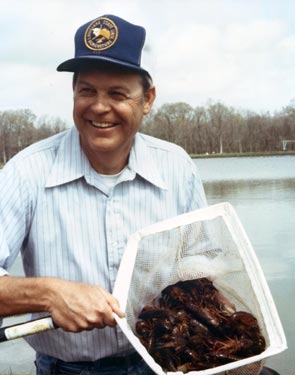
Jim Avault
Louisiana is home to bountiful estuaries, and therefore a buffet of seafood offerings has been extensively studied by LSG-supported researchers. From shrimp, oysters, crabs, menhaden, crawfish, croaker, flounder, alligator, bass, frogs, trout, drum, snapper and pompano – if it swims or crawls in Louisiana and has economic value it has received extensive study.
One early, fruitful project was the multiple studies in the 1970s and 1980s on crawfish farming. The wild crawfish industry was a boom or bust operation; some years had great harvests, while others were not. As a recent arrival to the state, Jim Avault was sure there was a way to raise crawfish in the extensive existing rice ponds to have a reliable product. “With farming you could control a lot of the parameters for optimal crawfish growth. I knew that if we could build an industry, there would be people to eat it,” recalled Avault.
Not everyone shared Avault’s vision. “I tried to get funding for aquaculture research all over. After multiple rejections, I was told ‘submit your proposal to Sea Grant.’” Initially, Avault was dubious. Since crawfish are grown in freshwater ponds, he didn’t think an organization named Sea Grant would be interested. But they were interested and demonstrated their support by sponsoring five graduate students to begin some of the very first crawfish farming research. “This research tremendously pushed forth the crawfish industry. I am very appreciative of Sea Grant for giving me funding when I couldn’t get it anywhere else.”
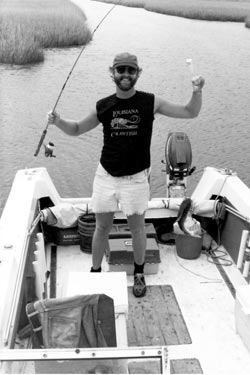
Richard Shaw
Another young researcher also benefitted from Sea Grant’s unique vision. Richard Shaw arrived in Louisiana in the early 1980s after completing a PhD in Maine. It was supposed to be a three-year research assignment, but after the first year, funding ran out. However, Ron Becker, associate director of LSG, saw a potential collaboration on menhaden. Shaw then spent his Christmas vacation writing proposals, one of which would be funded by Sea Grant.
“Sea Grant gave pivotal funding when I needed it and they saw connections I wasn’t aware of,” recalled Shaw. Becker had the vision to connect the offshore work that Shaw had been doing with the inshore work of Bill Herke from the Louisiana Cooperative Fishery Unit. This made a more robust project and ultimately of use to industry. “I really liked the Sea Grant concept: connectivity to the coast through agents, connections to natural resources economics and supporting the concept of coastal law.”
Now an associate dean, Shaw has even more respect for Sea Grant program. From a reflective role in administration, he sees the long-term impacts of the program. “Sea Grant was insightful in partnering groups that may have been unaware of each other, they supported young faculty through grants and have funded hundreds of graduate students. They always got a return on their investment.”
Chuck Wilson can also trace his research ascendency to Sea Grant. “My legacy with Sea Grant goes back to my graduate student days when I was supported as a Sea Grant fellow to conduct research on swordfish. That track record brought me to the Coastal Fisheries Institute that was created at LSU by Sea Grant. Soon after my arrival I was fortunate to be funded as a young faculty member by Louisiana Sea Grant to begin an age and the growth program on red drum.”
In addition to going from Sea Grant fellow to Sea Grant faculty, Wilson would later serve as the program’s second executive director, replacing Van Lopik upon his retirement in 2005. Wilson would then get to play an active role in continuing Sea Grant’s long commitment to Gulf recreational and commercial fisheries. “In a sense, Sea Grant launched and supported my early career and helped make many of the fisheries management decisions today possible,” said Wilson.
Coastal and Wetland Processes
With one of the world’s largest delta ecosystems and millions of acres of wetlands, Louisiana is a natural living laboratory for researchers to explore. Understandably, a lot of Sea Grant-funded research has involved studying coastal and wetland processes throughout the state.
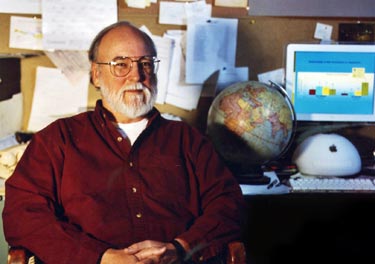
John Day
This living laboratory is what drew John Day back to Louisiana to teach and conduct research. After finishing doctoral work at the University of North Carolina at Chapel Hill, he received a call from Van Lopik in the early days of LSG’s existence. Van Lopik wanted him to come down and interview. Working together, Sea Grant and Day would bring greater understanding to the forces that build and sustain deltas.
They would also make it a preeminent place to study these wetlands. “Louisiana has the most extensive delta research program in the world,” said Day. “I received continued support from LSG for 30 years and so did my students. Over one-third were funded directly by Sea Grant and another 20 percent benefitted,” recalled Day. With Sea Grant support he studied nutrient transport in Lac des Allemandes, river pulses in Barataria, cold fronts impact on hydrology in Four League Bay and water quality around the Caernarvon diversion.
Irving Mendelssohn is another prolific Sea Grant researcher. When he arrived in Louisiana there were limited funding options for his research. Mendelssohn was interested in the health of marsh plants, controls of wetland loss and what environmental conditions were causing salt and brackish marshes to disappear. Sea Grant again took a chance on a young researcher and began funding wetland health research.
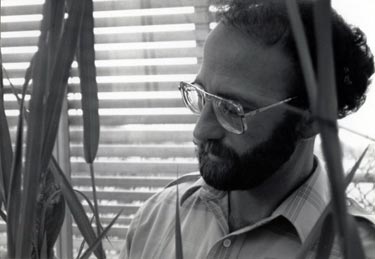
Irv Mendelssohn
The results turned out to be surprising and the implications of it are still being felt today. The plants were primarily stressed due to the increased waterlogging. Therefore, to restore healthy marshes, the addition of thin layers of sediment, via sediment diversions or hydraulically dredged sediment-slurries, was needed. This is now the primary wetland restoration element of Louisiana’s current Coastal Master Plan. “I’ll always be grateful to Sea Grant for the jump start to my research,” said Mendelssohn, “They have been instrumental to my career.”
Louisiana has experienced the most rapid rate of coastal land loss of any state, and researchers have also been on the forefront of studying this. In many instances some early field sites, like parts of Leeville, Grand Terre and the Chandeleur Islands, no longer exist. “Louisiana Sea Grant helped bring the wetland loss problem to the forefront,” added Mendelssohn. “One of the central environmental problems in Louisiana was initially identified and studied through the Center for Wetland Resources and Sea Grant efforts.”
In addition to bringing to light these coastal processes, the work of these researchers has greatly informed coastal management in the state. “This research is the central core of the Coastal Master Plan. These holistic studies provide a whole matrix of how the coast functions and what it needs,” said Day. Mendelssohn adds, “I think the Sea Grant program can be very proud of the applied research they’ve done over the years. It has been tremendously important to the people of Louisiana.”
Human Dimensions
Much of the early coastal research funded by LSG focused on studying the diverse coastal ecosystems and providing access to safe, sustainable seafood products. However, the last few decades have seen a rise in studying the human element of our coastal way of life. The field of resilience has burgeoned into an area of extreme interest to both researchers and the communities they work with.
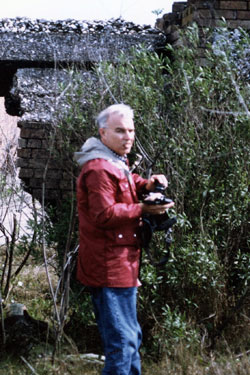
Don Davis
Starting in the late 1970s, a few pioneers were pushing the social science research for LSG. Don Davis and Don Gary from Nicholls State had one of the inaugural research projects when they looked at the social experience in Louisiana marshes. “Looking at the social side of science is looking at the key drivers of our lives. It’s the foundation of our economic well-being,” recalled Davis, now a Louisiana Sea Grant Scholar.
Recent storms, coastal land loss and flooding events have highlighted the importance of having communities that can respond and recover from events. “Resiliency is tattooed to the cultural soul of south Louisiana. Resiliency is taking on national and international significance. Louisiana Sea Grant is at the vanguard of this, we are constantly observing, retooling, and establishing a new normal,” said Davis.
This early work with communities was later augmented by Shirley Laska. In the 1980s, she began examining the impacts of flooding on Slidell at the community level. This early work then burgeoned into a career of exploring a community’s response to natural and manmade hazards and finding ways to better prepare towns and parishes for future risks.
“My first project with Sea Grant shifted my research. I shifted to disaster response and never went back,” recalled Laska. “Floodproof retrofitting may seem a dull and boring topic, but it is so critical. It’s the most important work that I’ve done. I’ve served as one of the founders of encouraging homeowners to take action.”
This early recognition of the critical need to support coastal and inland Louisianans would shape Laska’s career. “I was one of the earliest social scientists to have gotten funding from Sea Grant. The grants continued for eight years and very likely contributed to my being appointed vice president of research at UNO, a position which I served in for eight years.”
The start from Sea Grant also gave Laska the ability to mark her university as a generator of social scientists that could serve the state. One University of New Orleans graduate, Matt Bethel, now serves as the associate director of research at LSG.
Charting a Path Forward
The researchers all expressed their unequivocal support of applied research and its importance for Louisiana. “The mark of success of any research program is that it is used to improve research or the private sector,” said Avault, “Sea Grant has been doing that.”
The nature of research has changed somewhat in the last 50 years, and it will continue to change in the next 50. LSG will continue to be there with a proven extension model. They will continue to support integrated research. And they will continue to strive in connecting coastal communities with ongoing research. Day forecasted, “The future of SG research is going to be local, because science is going to become more local.” Therefore, Louisiana Sea Grant will be well positioned to offer sound science.
Regardless of the individual projects funded, Louisiana Sea Grant will continue to be committed to healthy coastal ecosystems, fisheries, community resilience and supporting many, many more graduate students.
